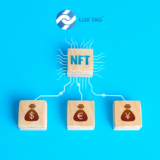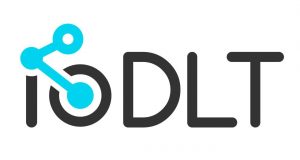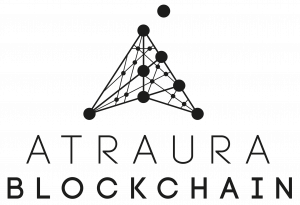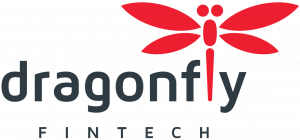NASDAQ: Qchain Charts New Native Advertising Roadmap
Today’s native advertising world, where a publication’s editorial content is paid for by an advertiser to promote their product or service is fraught with challenges threatening the ad industry. Due in part to the growing dominance of digital media giants like Facebook, Google, and Amazon, display advertising conversions continue to experience a decline.
This trend has spurred efforts to find new solutions for navigating the prevailing advertising ecosystem in a scalable, trustworthy and secure way.
First appeared on Nasdaq
A Viable Solution in the Blockchain?
This nascent technology, which undergirds Bitcoin and other cryptocurrencies, is certainly garnering attention in the ad tech industry. In the past 18 months, companies like MadHive , Basic Attention Token (BAT) and adChain have come to market employing blockchain protocols to applications in the digital advertising supply chain.
One creative approach to solving problems in the ad tech supply chain is an application being developed on the Ethereum and NEM blockchains by Qchain. The open source platform will use blockchain technology to facilitates transactional engagement between advertisers and content publishers, while being mediated and arbitrated by hosts. Akin to Google AdSense Network , Qchain is targeting a three-pronged approach (advertiser, publisher, and host) with an emphasis on a proof-of-interaction transaction verification system.
What makes Qchain unique as opposed to other adtech blockchain startups is its ability to subtly shift the digital advertising model in a way that’s more favorable to advertisers. User experience and ease-of-use has therefore emerged as a top priority in the company’s development amid an environment of advertisers and publishers who are traditionally fairly conservative when it comes to change. As in the case of BAT, Qchain aims to focus more on conversions versus rewarding users for their attention.
Amid its growing involvement in the intersection between blockchain technology and advertising, Qchain champions the notion that Ethereum and NEM are the two most promising enterprise-centric blockchain hubs currently in development. The former allows for ease in development of decentralized smart contracts; the latter skillfully delivers the Proof-of-Importance (POI) algorithm and the EigenTrust++ reputation system to encourage transactions. Users therefore will have maximum choice at their disposal, opting for the blockchain that most accurately suits their needs.
The infrastructural foundation of Qchain consists of four main elements: the advertiser section, the publisher section, the host section and the marketplace. A user can serve as both an advertiser and publisher.
Qchain’s Multidisciplinary Beginnings
“The members of the team and I are curious about the world, and a wide variety of academic subjects,” said CEO Wally Xie about Qchain’s ambitious direction. “Therefore we like to go where there are complex problems to solve.”
Xie has long been fascinated by complex systems, and therefore saw blockchains are also an extension of that. At the National Institutes of Health, he worked on using neural networks to simulate and replicate human brain behavior. Now at the University of California Irvine he is working on comparing complicated mathematical climate models using Bayesian statistics. “Brains and climate are complex systems, and so are blockchains,” says Xie.
After a few years of following the blockchain industry and its meteoric climb, Xie saw the “third generation” of crypto enthusiasts as well as the concept of tokenization as paths to opening up more opportunities for blockchain technology’s application. At the end of last year, he started brainstorming business and technical problems that could be solved by decentralization and transparency.
While daydreaming in class one day in early 2017 (he’s currently pursuing a PhD in Mathematical Biology at UC Irvine), Xie began comparing blockchain technology with what he had learned working for the social media management firm Sprout Social . Xie realized that blockchains could make payouts and transactions in advertising and marketing cheaper and more convenient.
He believes that the transparency of blockchain technology makes it easier to spot ad fraud post-hoc, harder to get away with things like SSP arbitrage, and improves the bargaining power of advertisers and publishers in the digital advertising ecosystem. He also appreciates that it allows an easy way to transfer funds directly between advertisers and publishers without a central deposit.
“Of course, my views have gotten more nuanced,” admitted Xie. “I have learned that there are parties in the digital advertising ecosystem that do not want transparency. I am also of the opinion that the decline of standard web display advertising and anemic conversion rates of ads was a far larger problem than ad fraud in digital advertising.”
The first digital marketplace for native advertising
As their roadmap states, Qchain has recently launched a demo for Qchain Native Direct Buy, the first piece of the platform. This part of the application will focus on creating a marketplace enabling simple and easy transactions of native ad units between content publishers and advertisers.
Xie said, “Native advertising buys are being conducted in an inefficient manner right now. Content publishers have large, unwieldy sales teams and have to do a lot of cold calls. Advertisers have to search for publishers and individually contact them to shop for native ads via phone, email or in-person meetings; they do not have convenient means of seeing available native ad units for sale in one place.”
Here is where Native Direct Buy comes in. Qchain aims to help solve these problems by providing a singular and accessible marketplace for advertisers and content publishers, such as BuzzFeed and Vox, to efficiently transact in native ad units. Blockchain technology, Xie pointed out, contributes to this idea by allowing advertisers to directly pay content publishers through cryptocurrency and potentially future tokenized fiat accounts, rather than going through a centralized deposit system.
Additionally, Xie suggested that a Native Direct Buy on the blockchain is more feasible to execute in the short term than a prototypical ad exchange based on blockchain scaling problems that cannot handle high transaction volume.
Xie said that the company is also in the process of developing their second application, Qchain Surveys, which will provide an enterprise paid survey service for marketers, pollsters and academics to inform their research.
“We will add applications in the future as we see fit to fill out the platform and fulfill our aims of building an entire end-to-end ecosystem for digital marketers and advertisers to run their whole workflow on blockchain technology,” Xie pointed out.
Qchain also has taken the rare step of developing a ready-to-employ, fully tested platform in advance of their ICO campaign – an approach that runs counter to most blockchain projects whose white paper/website only campaigns have given the ICO scene a bit of a black mark.
Xie concludes: “We want to be an example of a sustainable, ethical company that grew from a legally compliant ICO. We want to make the sponsored content sales process more convenient and easy for content publishers, so that they can spend more time working on projects that also are not sponsored and satisfy their journalistic responsibilities.”
The views and opinions expressed herein are the views and opinions of the author and do not necessarily reflect those of Nasdaq, Inc.









